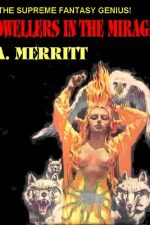 (1884-1943) US editor, real-estate developer and writer, primarily of Fantasy and Science Fantasy though he was influential among sf writers and readers as well. His first years were occupied with newspaper journalism; he was a longtime assistant editor of The American Weekly, becoming editor-in-chief in 1937 and remaining so until his death. Though his fiction was written as a sideline to this busy career between 1917 and 1934, his eight novels are in fact various in content and intensely conveyed.
(1884-1943) US editor, real-estate developer and writer, primarily of Fantasy and Science Fantasy though he was influential among sf writers and readers as well. His first years were occupied with newspaper journalism; he was a longtime assistant editor of The American Weekly, becoming editor-in-chief in 1937 and remaining so until his death. Though his fiction was written as a sideline to this busy career between 1917 and 1934, his eight novels are in fact various in content and intensely conveyed.
Merritt began publishing stories with Through the Dragon Glass (24 November 1917 All-Story Weekly). His first novel, The Moon Pool, begins with the discovery of an insubstantial but deadly monster known as the Shining One within a pool at the Underground heart of the Island domain of Nan-Matal in the South Pacific, and moves on to a complicated Lost Race melodrama in which the monster represents an alternate course of Evolution. The Metal Monster follows loosely from The Moon Pool, in that the original version retains the same narrator and frame-story, though the tales themselves are unconnected. The Metal Monster, a Lost-Race tale set in the Himalayas, comes as close to orthodox sf as Merritt would reach in its description of a collective Alien being, a pit-dwelling Shapeshifter comprised of millions of metal parts, a creature whose terrifyingly indifferent otherness clearly influenced H P Lovecraft’s later visions of cosmic horror.
Later works back away from sf-like explanations. In The Ship of Ishtar, perhaps his most sustained tale, a man travels into a magical Parallel World and falls in love with the beautiful female captain of the ship of Ishtar; the highly coloured Planetary Romance coloration of this novel still has a strong effect on readers. The Dwellers in the Mirage is another effective Lost Race novel, one of Merritt’s best. The Dr Lowell sequence—comprising Burn Witch Burn!, which was filmed as The Devil-Doll (1936); plus Creep, Shadow!—is supernatural fiction, focusing on witchcraft and Horror, and featuring a valiant detective.
Merritt was influential upon the sf and fantasy world not primarily through his storylines, which tended to be unoriginal (he acknowledged the influence of Francis Stevens on his work), or through the excesses of his style, but because of the genuine imaginative power he displayed in the creation of estranged but hypnotically attractive alternative worlds and realities. He was extremely popular during his life, even having a Pulp magazine, A Merritt’s Fantasy Magazine, named after him; and Sam Moskowitz, in Chapter 12 of Explorers of the Infinite (1963), probably represents the view of many of Merritt’s original readers that he was the supreme fantasy “genius” of his day. The escapist yearning for otherness and mystery that he expressed has seldom been conveyed in sf with such an emotional charge, nor with such underlying pessimism, for his tales seldom permit a successful transit from this world. His vision of a universe whose indifference to humanity reads like malice—a vision expressed most fully in The Metal Monster and later shied away from—now seems increasingly pointed. He was posthumously inducted into the Science Fiction Hall of Fame in 1999.
(Edited from Merritt’s entry in the Encyclopedia of Science Fiction. See link for publication dates, additional work and other details.)








